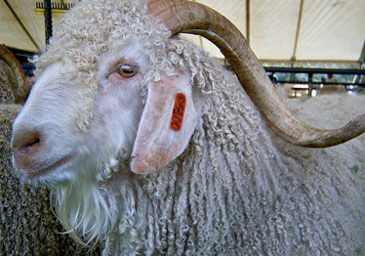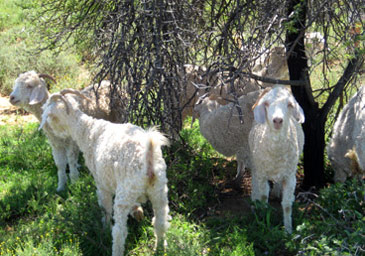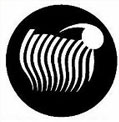

Mohair was known as far back as biblical times. The curtains of the Hebrews` tabernacle were woven from the snow white, silky fleece of the Angora Goat (Exodus XXVI, vs. 7). The Turkish Angora goat has existed for over 3000 years and is thought to have originated from the succession of genetic mutations from the original Feral goat population in Turkestan. The hair is mainly White in colour though very small quantities of Black and Red/Brown hair are sometimes produced. The breed is still reared in various areas of Anatolia where shearing normally takes place in April/May and originally they were the major producer of Mohair. However, production has declined in recent years and today it is estimated that some 300,000 kilos a year is shorn. Turkey, as the major producer for many years, prohibited the export of Angora Goats but it is known that some goats were imported into South Africa with the early settlers in 1839, similarly into the United States in 1849 and thus gradually they spread around the world.
Breeding and selection became more intensive in South Africa and the United States and as a result these countries quickly improved the fibre quality. Today they are the major producers of Mohair. The South African Angora goat first arrived in the Cape in early 1838. A shipment of twelve rams and a single ewe were imported from Turkey for breeding purposes. However, before departure their unscrupulous owners rendered the rams infertile. Fortunately and unbeknown to the owners the single ewe was pregnant and gave birth to a ram kid shortly after arrival in the Cape.
Today the goats are largely reared in the Eastern Cape, with shearing taking place twice yearly and the hair offered through auction in Port Elizabeth. The Summer clip is sold February to June, whilst the Winter clip July to December. South Africa currently produces an approximate annual 3,000,000 kilos of shorn fibre. This figure has declined steadily in recent years from a high of around 11,000,000 kilos, but still makes South Africa the largest producer of good quality Mohair.
In addition to the above, Mohair is also produced in Lesotho, a landlocked country to the north of South Africa, which was originally called Basuto Land and now lends its name to the quality of Mohair known as ‘Basuto’. These goats are reared by many small farmers in a semi-domesticated way, due to the lack of an effective selective and breeding programme the bulk of the hair is much more crossbred in quality. Once again the hair is sold via auction in Port Elizabeth and production is estimated at approximately 750,000 kilos.
The United States Angora goat is reared mainly in the driest areas of Texas centred on the Edwards plateau. Again, shearing takes place twice a year. The hair, similar in style to that of South Africa, is sold either by private treaty or often in the form of a sealed bid sale where buyers submit their offers to a central warehouse, which handles the sale. Geographical positioning means the seasons are reversed from those of South Africa, where the Winter hair is available February to June, the Summer hair, which is referred to as ‘Fall’ hair, being sold July to December. Production, here too has declined quite sharply in recent years with today’s estimates of around 500,000 kilos annually.
Mohair of varying quality and quantity is today produced in many countries around the world from Australia and New Zealand to China, Canada, Argentina, Peru and various parts of Europe and Scandinavia. Angora goats are also to be found in Mexico, Mongolia and the UK. The overall world production is currently estimated around 5,000,000 kilos.
Mohair qualities cover a very wide range, from the finest soft Kids (baby) at 24 microns to stronger Adult at 38 microns. The versatility of the fibre enables it to be used in many guises from Knitwear to Suitings, Coats, Scarves, Shawls as well as articles such as Blankets, Curtains and Furniture coverings. Its excellent absorption and shrink resistant properties make it highly suitable for Socks and it is also used to produce high quality Carpets, Rugs, Ties and Hand Knitting Yarns.
It is well known for its brilliance and excellent dying properties, which coupled with its other unique characteristics, attracts it to designers and the discerning buyer everywhere throughout the world.

